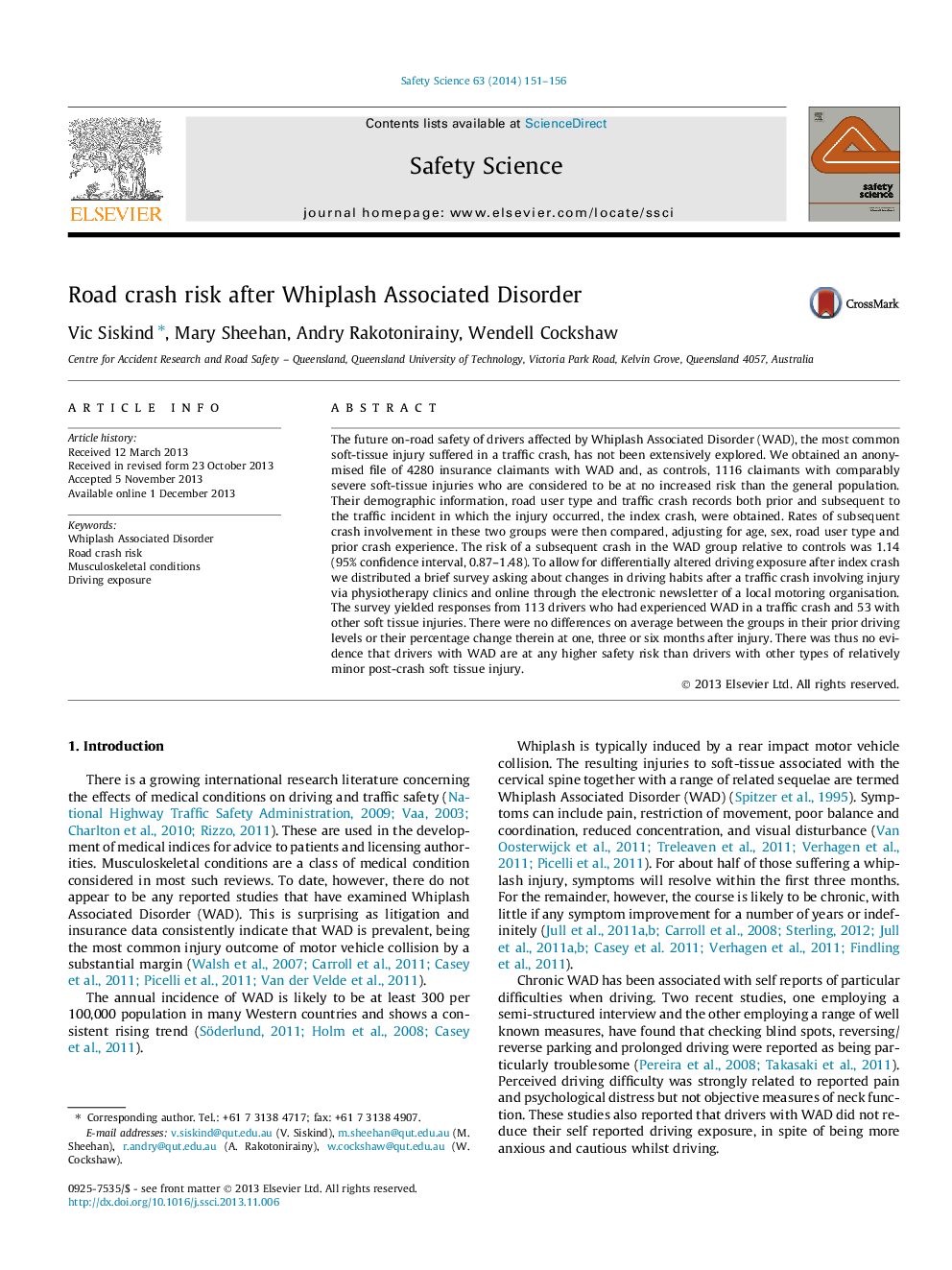| کد مقاله | کد نشریه | سال انتشار | مقاله انگلیسی | نسخه تمام متن |
|---|---|---|---|---|
| 589193 | 1453407 | 2014 | 6 صفحه PDF | دانلود رایگان |
• Whiplash Associated Disorder (WAD) is the most common compensable soft tissue injury affecting drivers after a traffic crash.
• Drivers with WAD have no higher risk of later crashes than drivers suffering other soft tissue injuries in a traffic crash.
• Drivers with WAD have similar pre- and post-crash levels of driving exposure to drivers with other soft tissue injuries.
The future on-road safety of drivers affected by Whiplash Associated Disorder (WAD), the most common soft-tissue injury suffered in a traffic crash, has not been extensively explored. We obtained an anonymised file of 4280 insurance claimants with WAD and, as controls, 1116 claimants with comparably severe soft-tissue injuries who are considered to be at no increased risk than the general population. Their demographic information, road user type and traffic crash records both prior and subsequent to the traffic incident in which the injury occurred, the index crash, were obtained. Rates of subsequent crash involvement in these two groups were then compared, adjusting for age, sex, road user type and prior crash experience. The risk of a subsequent crash in the WAD group relative to controls was 1.14 (95% confidence interval, 0.87–1.48). To allow for differentially altered driving exposure after index crash we distributed a brief survey asking about changes in driving habits after a traffic crash involving injury via physiotherapy clinics and online through the electronic newsletter of a local motoring organisation. The survey yielded responses from 113 drivers who had experienced WAD in a traffic crash and 53 with other soft tissue injuries. There were no differences on average between the groups in their prior driving levels or their percentage change therein at one, three or six months after injury. There was thus no evidence that drivers with WAD are at any higher safety risk than drivers with other types of relatively minor post-crash soft tissue injury.
Journal: Safety Science - Volume 63, March 2014, Pages 151–156
